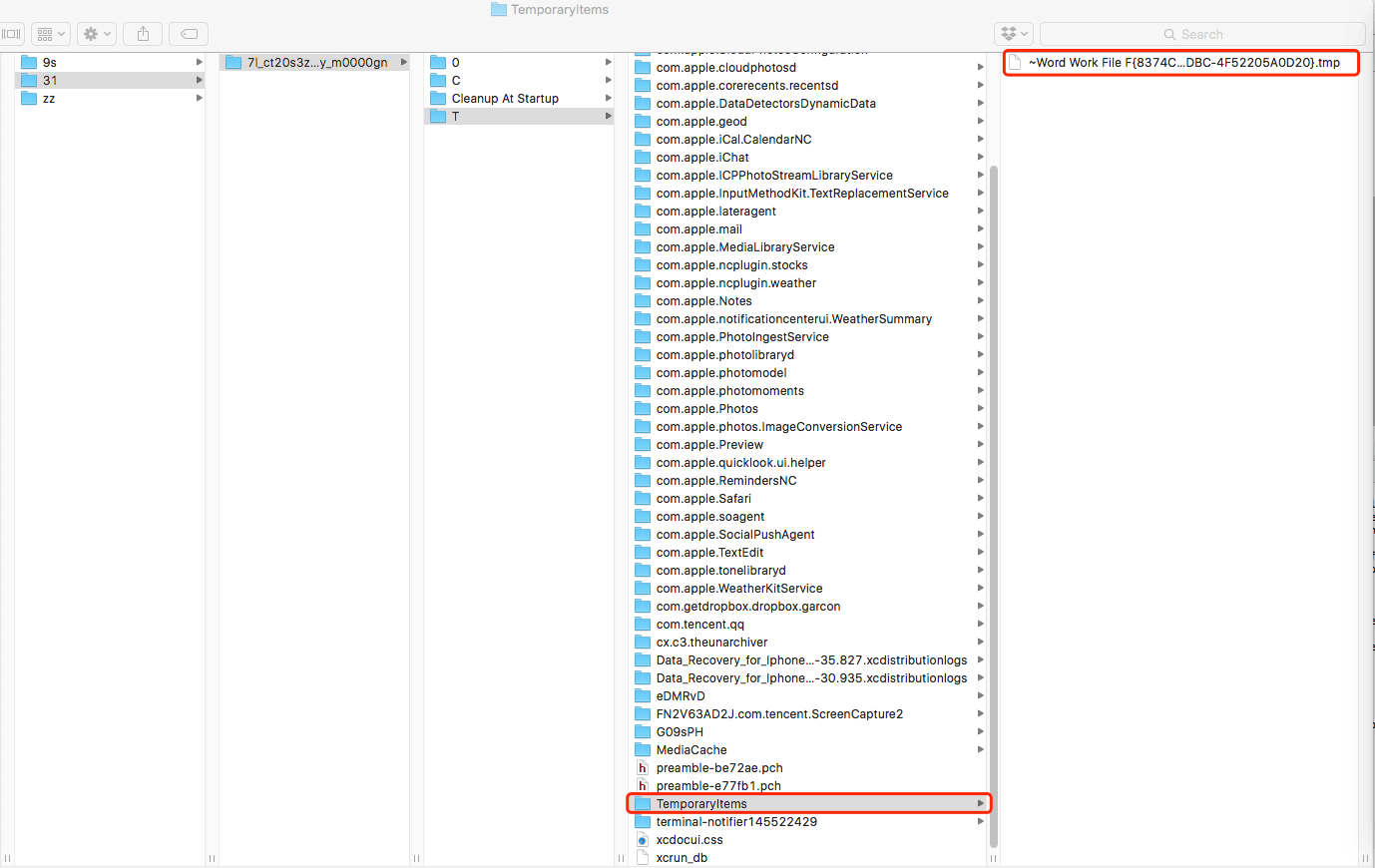Aug 14, 2019 How To Open Mac’s Pages file format on Microsoft Windows; The server does not allow relaying email error, fix; How to extract RAR files on Mac; What Are Outlook Temp files? Outlook Mac stores temporary files such as e-mail signatures, opened attachments like images, documents, PDF files, etc., and other e-mail content in the following.
If your power goes out or your computer malfunctions when working on an Word for Mac 2011 document, all you have to do is open the application again. Word 2011 for Mac looks for and opens any AutoRecover files for the document(s) that you were working on when an unexpected crash occurred. Your document opens with “Recovered” appended to the filename. Choose File→Save As from the menu bar to restore the original filename and location.
- Apr 17, 2018 When and where Word creates temporary files The location where Word creates the temporary files is hardcoded information and cannot be edited. Therefore, it is important that NTFS permissions for the user are set accordingly. For more information, click the following article number to view the article in the Microsoft Knowledge Base.
- Part 4: How to Recover Temporary Word Files on Mac with Time Machine. Using recover temporary Word files Mac, you can recover Word Mac temporary files without any hassle provided that you have created a backup of your files using Time Machine. Let’s learn how to find the temporary Word file on Mac with Time Machine.
- How to Recover Temporary Word Files in Windows 10/Windows 7 Generally speaking, Microsoft Word's built-in autosave function is enough for you to retrieve deleted or lost Word documents. As its name suggests, the feature is able to save the Word document you’re editing or you’ve created in case of a computer crash or power off, resulting in.
- Jan 04, 2020 You can use the auto recovery feature in Microsoft Word to recover mac OS Word temporary files. It is probably one of the best features of MS Word that you can find your unsaved files in its Temporary or AutoRecovery folder. This option is immensely helpful in case you have unintentionally deleted a Word file.
Word for Mac can recover files that were open because, by default, Word autosaves your document every ten minutes while you’re working on it. If you want, you can change the save time interval within the AutoRecover setting as follows:
Choose Word→Preferences→Save from the menu bar.
Word’s Save preferences are displayed.
Change the number of minutes in the Save AutoRecover Info Every: [X] Minutes setting.
The default is 10 minutes. Entering a lower number saves more often, but you may notice Word is more sluggish when it saves so often. Entering a higher number may make Word perform better, but you may lose more changes if a power outage or computer crash occurs.
You can deselect this check box if you don’t want Word to save an AutoRecover file. You might do this for extremely large documents that take a long time to save. Of course, if you experience a power outage or computer crash, you will lose all your changes since the last time you manually saved the file.
You don’t need to select the Always Create Backup Copy check box. With AutoRecover and Time Machine, the bases are covered. The option is there only for backward compatibility.
Click OK when you’re finished.

Rarely, Word might not automatically display the AutoRecover file for the document(s) you were working on the next time you open Word. In that case, do the following in Word to open the AutoRecover file:
Choose File→Open from the menu bar.
Type AutoRecover or type a keyword or phrase in the Spotlight Search box in the top-right corner of the Open dialog.
Double-click the most recently saved AutoRecover file, or select the file and click Open. If you did a keyword or phrase search, use the Last Opened information to help you choose a likely file to open.
If the file you want is grayed-out, choose All Files in the Enable pop-up menu, which allows you to open any file type.
Microsoft Word Mac Temporary Files Download
You can also use Mac OS X Time Machine to recover any file that you’ve saved at least once. When you use Word for Mac, it’s nearly impossible to lose more than a few minutes’ worth of work thanks to AutoRecover and Time Machine.